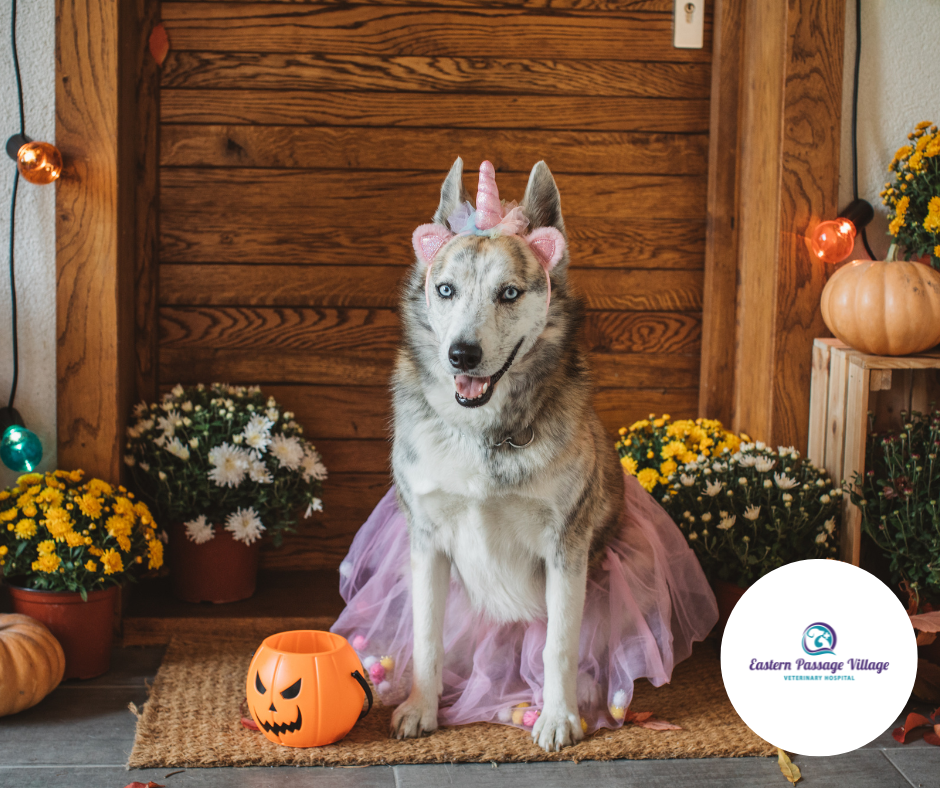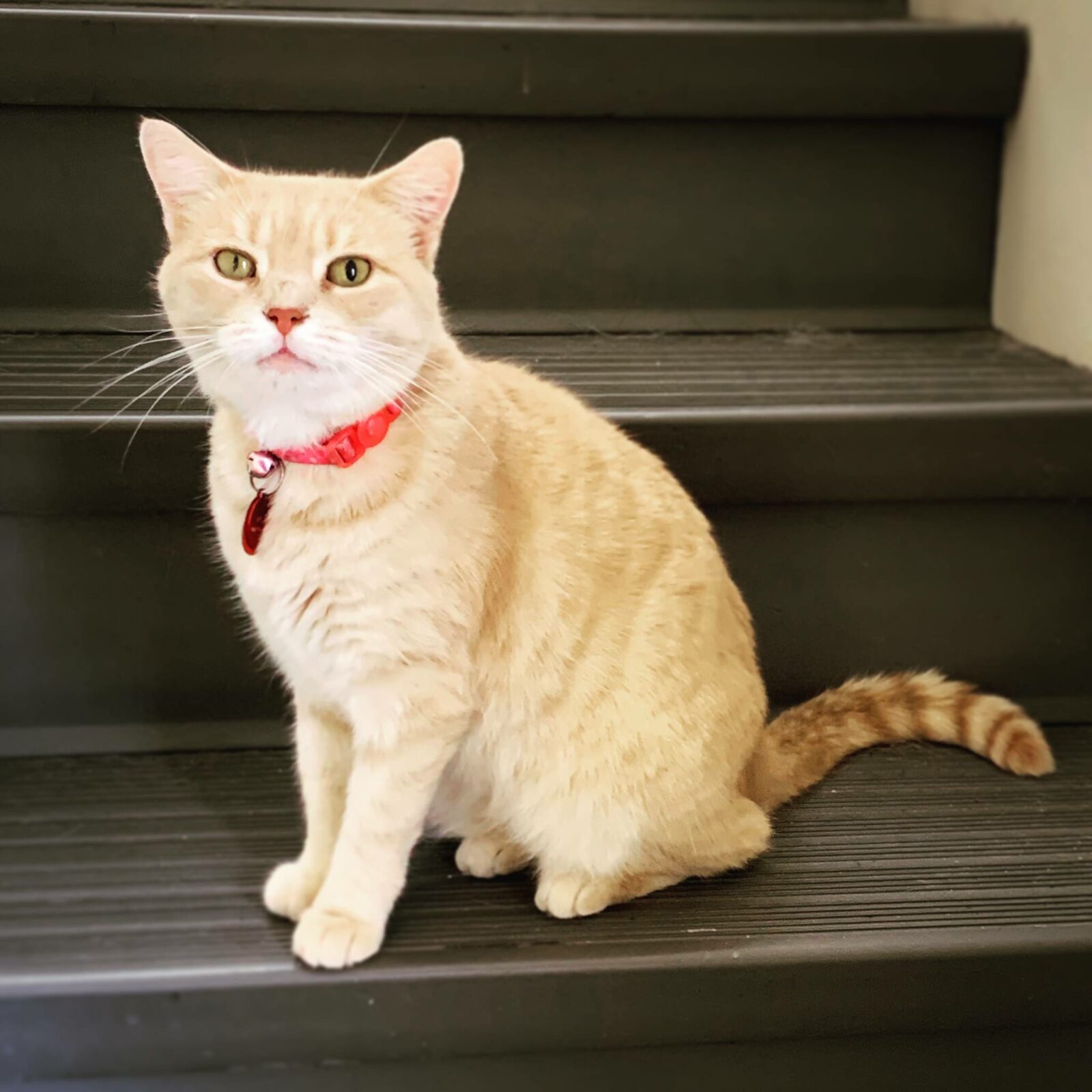
In just over a week, we will be donning costumes and face paint, lighting our jack-o’-lanterns, and putting candy, chips and chocolate by the door in preparation for a night of trick-or-treating. We prepare ourselves, our children and our homes for Hallowe’en, but how do we prepare our pets? Caring for our pets and having a plan in place for them on Hallowe’en is important as, despite being fun for our family, it can be a frightening and even harmful event for our pets.
The night of Hallowe’en can be a fearful time for your pet. The repeated ringing of the doorbell, knocking at the door, and entrance of strangers in even stranger costumes can be understandably distressing to our pets. The best way to keep your dog or cat from becoming frightened is by removing them from the situation. If possible, have them in a separate room at the back of the house, away from the front windows, so that they cannot see or hear the comings and goings of the trick-or-treaters. You can put their bed and favorite toys in this room so that they feel safe and comfortable. To limit noise stimulus from the front door, you can play the television, radio or a white noise machine. You can also provide things like lick matts, treat balls, or, specifically for dogs, Kong’s with frozen peanut butter or yoghurt inside as a treat distraction. Having this comforting space full of safe distractions should limit and hopefully prevent your dog and cat’s stress response to the traffic at the front door.
In some cases, particularly if you know your dog or cat to be noise reactive and/or fearful to new guests in the home or people at the front door, anti-anxiety medications may be beneficial to administer a few hours prior to trick-or-treaters arriving. If you have any questions about anti-anxiety medications, please reach out to your veterinarian and veterinary healthcare team.
The fear from trick-or-treaters is not the only concern at Hallowe’en for pets. Particularly for dogs, the risk of candy and chocolate consumption is a common event at this time. Bowls of candy and chocolate being out at an easily reachable level for kids, unfortunately, means that they are also easily accessible for our pets as well.
As many of us are aware, chocolate is toxic to pets. At lower doses of ingestion, we can see stomach upset including throwing up and diarrhea. However, at higher doses, more severe signs can occur, including hyperactivity, seizures, and even death. Again, prevention is key in this case. Whether this is keeping chocolate products out of reach of your dog, keeping your dog in a separate room from trick-or-treating events, or (even better) both; keeping your dog from getting into and consuming chocolate is of key importance. If your dog does consume chocolate, please contact your veterinarian as, depending on the amount ingested, they may recommend treatment plans including decontamination (inducing vomiting), administration of binding products such as activated charcoal; and even hospitalization with supportive care.
Chocolate is not the only thing to be cautious of though. Raisins and xylitol products, both commonly found in candy products, are also toxic and can be fatal to dogs and cats. Even consumption of significant amounts of candy (even if not including these toxins) can cause stomach upset. Because of this, if your pet gets into any chocolate or candy products, it is recommended that you keep the wrappers for reference of what they ingested and contact your veterinarian for their recommendations.
Hallowe’en night does not have to be scary and, with the appropriate preparation, it can be a safe and fun experience for all members of the family, including our pets.
Have a safe and Happy Hallowe’en!

